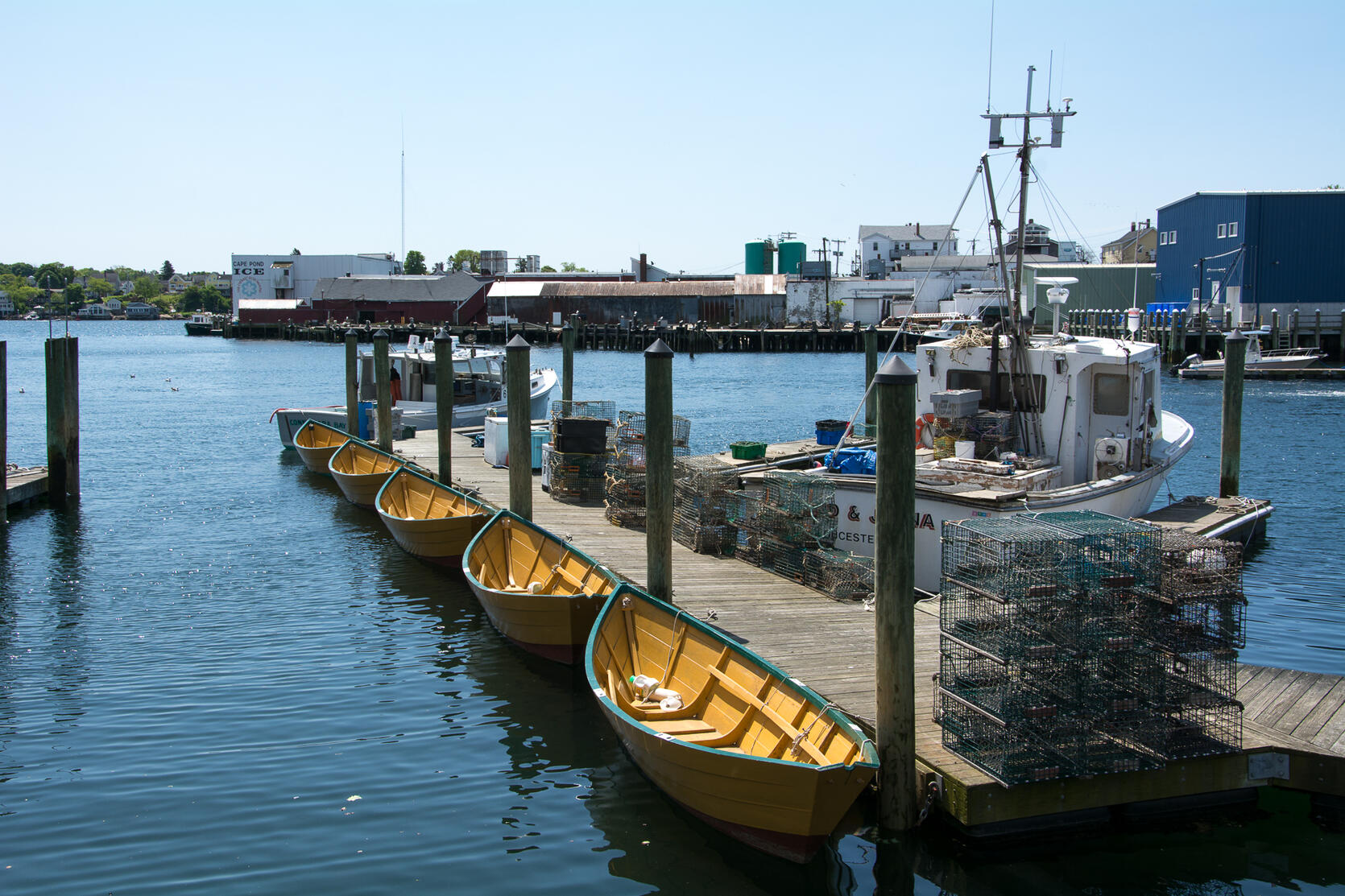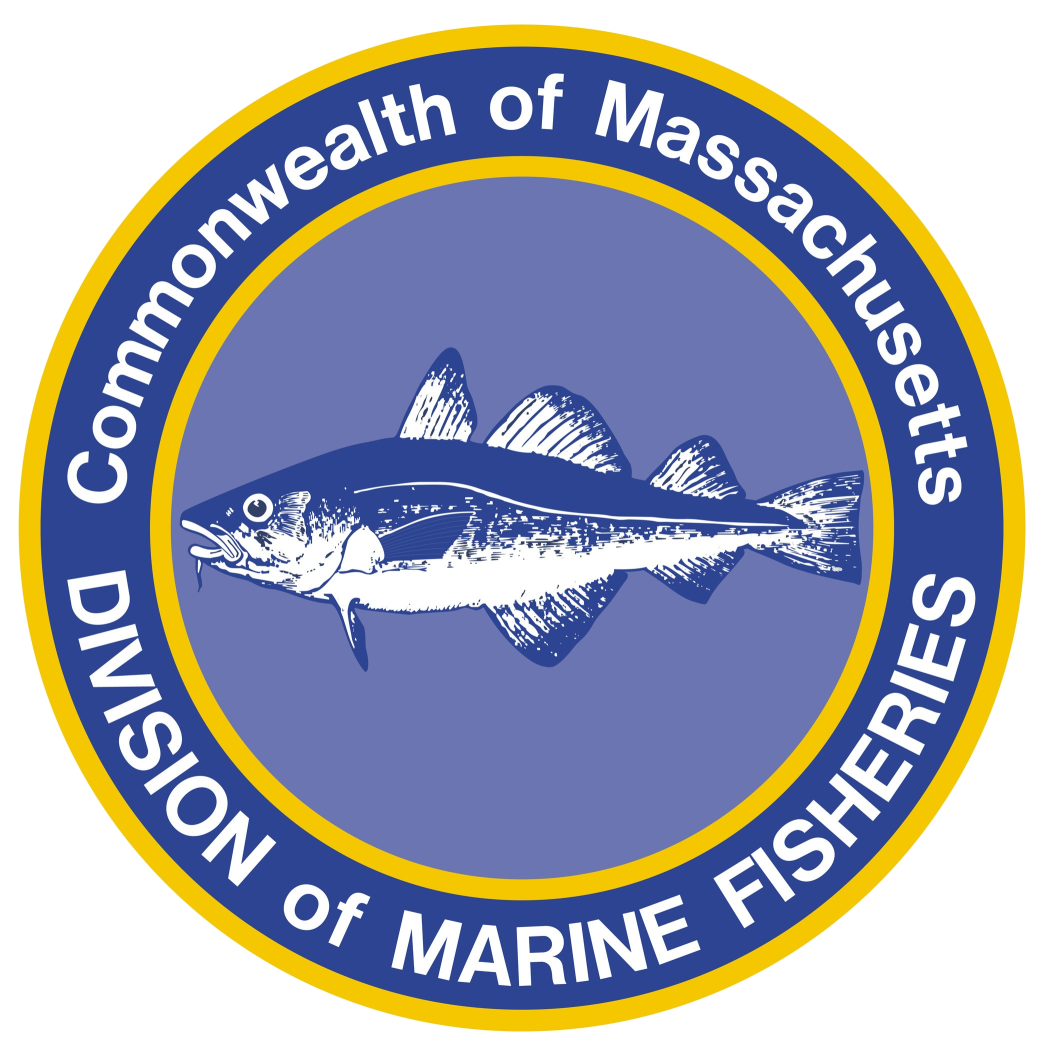- Division of Marine Fisheries

In 2019, DMF awarded the Urban Harbors Institute (UHI) at the University of Massachusetts Boston a Seafood Marketing Program grant to complete a research project detailing the commercial fishing activity, existing infrastructure, and infrastructure needs of the commercial fishing industry in the coastal municipalities of Massachusetts. Led by UHI, the project has been a collaborative effort involving DMF and the Cape Cod Commercial Fishermen’s Alliance. The report, “Port by Port: Profiles and Analysis of the Massachusetts Commercial Fishery,” is nearing completion and will be published early in 2021.
The Massachusetts commercial fishing industry continues to be an important economic driver for the state, with annual seafood landings consistently valued at approximately $600 million to harvesters. The top species landed in Massachusetts include sea scallop, lobster, oyster, and groundfish (cod, haddock, flounders, etc.). New Bedford is not only the top port in the state, in terms of the value of seafood landed, but it is also the number one valued port in the country year after year, due to valuable sea scallop landings.
Despite the continued economic importance of the industry, competing interests have put a strain on commercial infrastructure in many ports. DMF recognized the need for this report over the past several years as members of the commercial fishing industry repeatedly expressed concerns about increasingly limited infrastructure in some ports and competing interests with other coastal activities. In addition to infrastructure needs, a key component of the report is identifying and describing the important commercial fisheries in each port, so the fishing industry and municipalities know the economic value of their ports.
DMF statistical and permitting data were used to quantify and detect trends in commercial fishing activity, including participation and value, statewide and in each port for the time period 2014 to 2018. During the five-year period, important statewide trends were noted, including a significant increase in the value of oysters landed, as well as an increase in the amount of lobsters being landed north of Cape Cod. These statewide trends were noticeable in individual ports, as well. Categorizing the important commercial fisheries in each port provides an important tool for municipalities and industry when advocating for infrastructure improvements. Ports in Massachusetts vary greatly in physical size, value of seafood landed, and species composition of commercial landings.
In order to assess existing and needed infrastructure in individual municipalities, UHI developed two surveys: one for harbormasters and one for commercial and for-hire fishermen. Participation was strong for both surveys. Harbormasters reported that over 50% of harbors statewide had parking for fishermen, access to a launch ramp, fuel stations, and commercial offloading infrastructure. Several other types of infrastructure, including trash disposal, dedicated commercial dock space, and ice, were reported as available in less than half the harbors statewide.
The top three infrastructure needs identified by the surveys were dredging commercial dock space, and additional shoreside parking. These three needs were identified in 50% or more of the municipalities surveyed. Additional infrastructure issues included conflicts with other users, infrastructure project permitting, and a lack of commercial moorings. Notably, there are many common infrastructure issues and needs across harbors and municipalities.
The composition of the fishing industry in each harbor and municipality in Massachusetts varies greatly and so do the infrastructure needs. The report provides suggested resources and recommendations for municipalities and the fishing industry to help address some of these infrastructure challenges. These include potential funding sources, infrastructure projects, and policy suggestions, among other recommendations for consideration.
The report authors would like to thank the harbormasters and members of the fishing industry that responded to surveys and provided valuable information for this report. The report will be published on the DMF website in early 2021.
By Story Reed, Permitting & Statistics Program Manager
